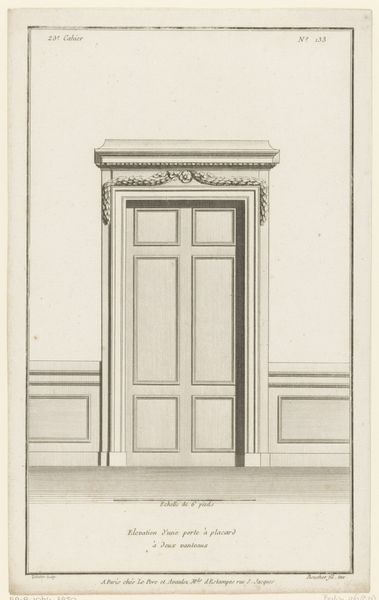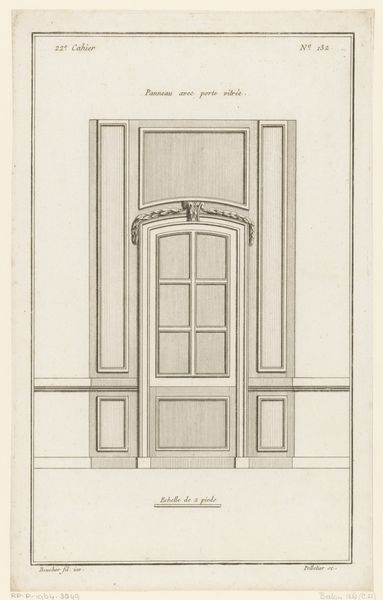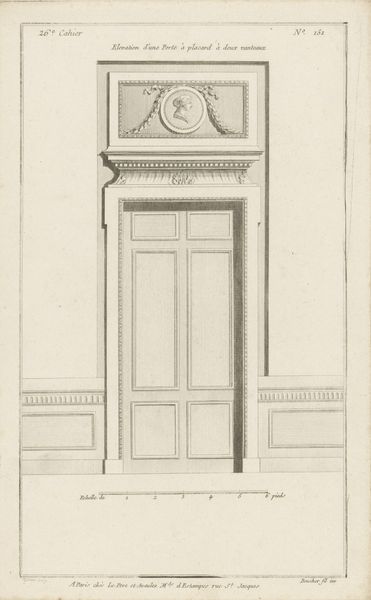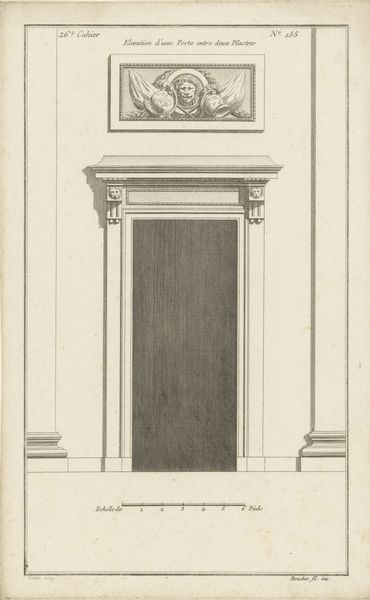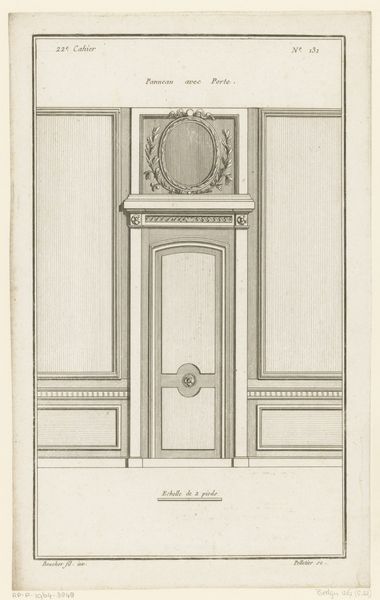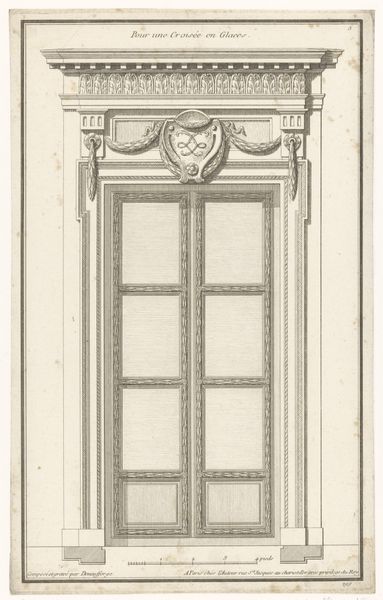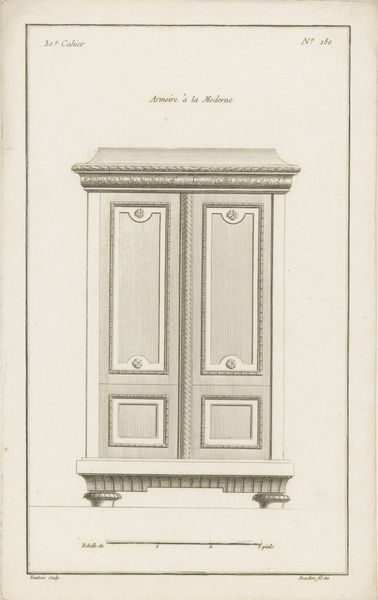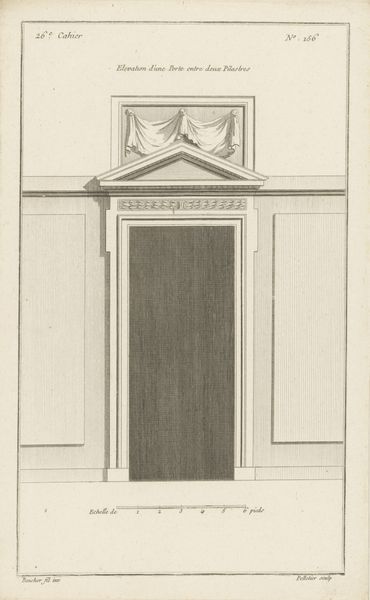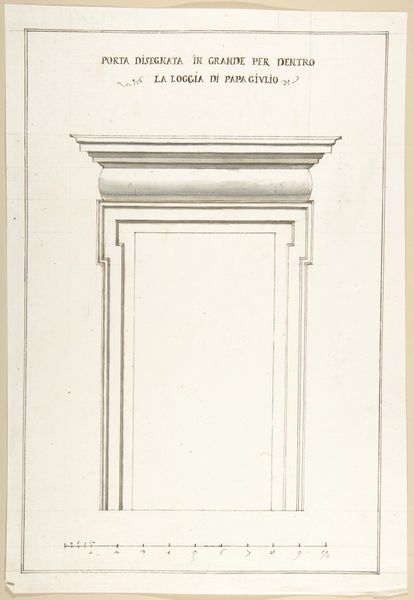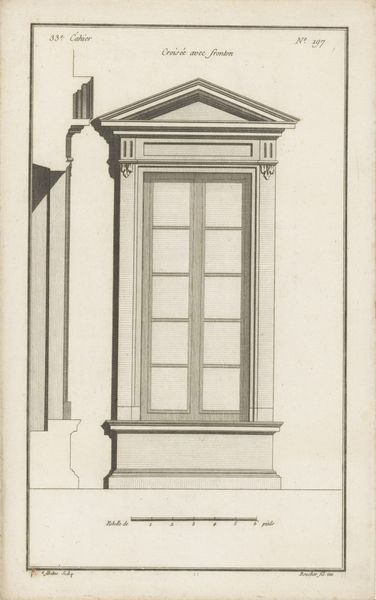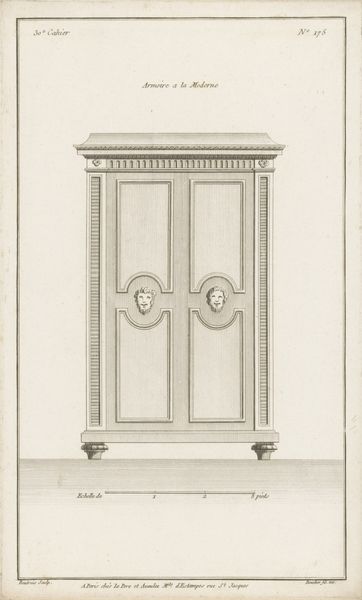
drawing, paper, engraving, architecture
#
drawing
#
neoclacissism
#
paper
#
geometric
#
line
#
engraving
#
architecture
Dimensions: height 328 mm, width 203 mm
Copyright: Rijks Museum: Open Domain
Curator: Welcome! We’re standing before "Deur met panelen," or "Door with Panels," a drawing made with engraving on paper, dating from 1772 to 1779, and crafted by Jean Pelletier. Editor: My first thought is one of stark elegance, wouldn’t you say? The line work is so precise, so controlled. A celebration of symmetry, structure, and understated ornament. Curator: It’s undeniably rooted in Neoclassicism. Think of the era—revolution brewing, a rejection of the frivolous Rococo. This doorway represents a longing for order, rationality, even a virtuous simplicity reflected in civic architecture, family and state ideals. Editor: Yes, there's an undeniable austerity. But it's an aesthetically pleasing austerity, thanks to the precise and detailed rendering of classical motifs along the doorway. Observe how the artist used geometric shapes for decoration, each line reinforcing the structure's intrinsic stability and order. Curator: Exactly! It speaks to power. Consider who would commission such a doorway. This wasn’t for the common person. It’s a subtle assertion of class, an almost codified visual language to communicate privilege. But I wonder if Pelletier considered who *wouldn’t* pass through such a door? Editor: A powerful reading. Still, I can't help but return to Pelletier's superb technical skill. Note the way he uses hatching and cross-hatching to define depth and volume despite the monochromatic medium. This isn’t just a plan; it’s a subtle performance of perspective and line. Curator: Absolutely, it showcases the skill required to produce designs, reflecting the increasing importance of architectural drawings for the bourgeoisie’s aspiring life. Editor: Ultimately, the appeal for me resides in its architectural form and geometrical style that seems suspended between functional design and abstract composition. Curator: For me, it stands as a potent reminder of art's role in constructing and upholding social order; an artifact born of political shifts and new status anxieties. Editor: A piece of crafted order. Curator: A passage of power.
Comments
No comments
Be the first to comment and join the conversation on the ultimate creative platform.
